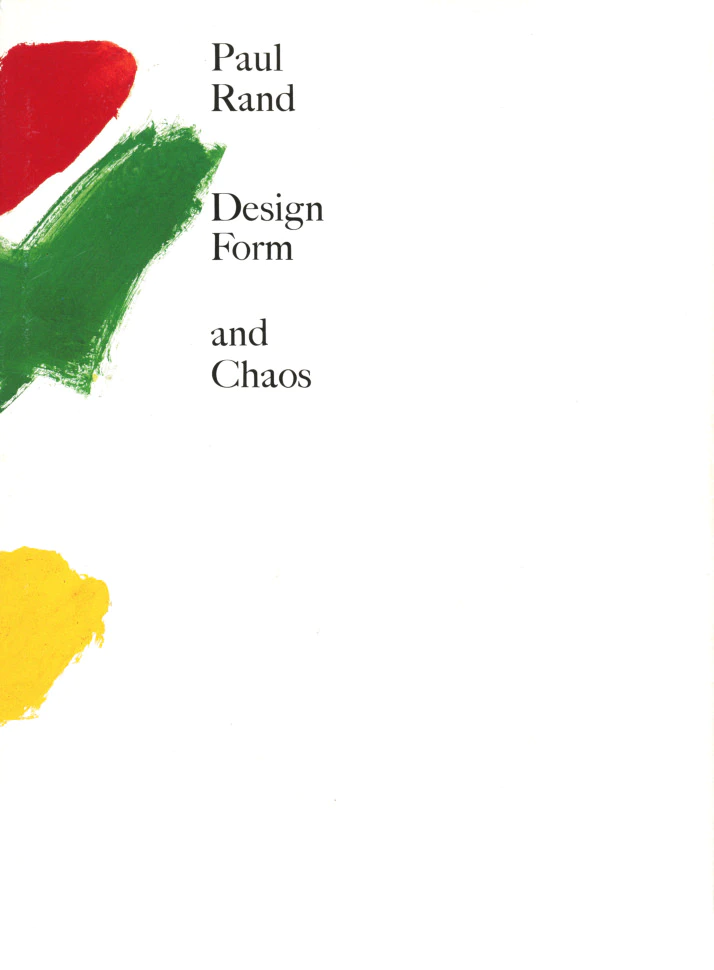View Inside
(Use ← → keys to navigate. Click for larger view.)
7.75 x 10 hardcover edition with 224 pages and 55 b/w illustrations and 70 color plates of work samples by the author. In this, Rand speaks about the contemporary practice of graphic design, explaining the process and passion that foster good design and illustrating his ideas with examples of his own stunning graphic work as well as with the work of artists he admires. The centerpiece of the book consists of seven design portfolios–with diagrams and ultimate choices–that Rand used to present his logos to clients such as NEXT, IDEO, and IBM.
Contents:
- Introduction
- Form + content
- Good design is goodwill
- Intuition and ideas
- Logos … flags … street signs
- The presentation
- NEXT
- The Limited
- The IBM Logo
- Adstar advanced storage and retrieval
- IDEO design
- Morningstar investment advisers
- Computers, pencils and brushes
- Aspects of book design
- A mentor
- From cassandre to chaos
“To have the preeminent graphic designer in America—the leading proponent of the Modern—intelligently and forcefully speak out makes this a document for today and the ages. Rand’s book is a classic.”
“Looking through [Rand’s] book, I found no work that I would not have been proud of having done myself. Design, Form, and Chaos is an outstanding teaching book, because it demonstrates how, by the simplest means, utility and beauty can be combined.”
“Paul Rand is America’s preeminent statesman of graphic design… . Design, Form, and Chaos [is] an excellent example of Mr. Rand’s capacity to create beautiful forms. As much a visual narrative as a verbal one, it contains many examples of his work from recent years. These are handsomely printed in duotone and color reproductions.”
“A strikingly designed book that looks at topics such as the values behind esthetics, the role of intuition in good design, the place of market research, and how to use computers. The book’s mix of short texts and smart graphics is just right.”
















